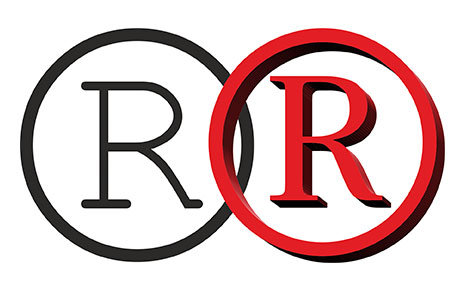
This article has been written by Janhavi Dudam, pursuing a Diploma in Intellectual Property, Media and Entertainment Laws from LawSikho.
Table of Contents
Introduction
Is it necessary to spend minutes trying to figure out what these symbols mean? The honest answer is no. You can quickly recognize them just by looking at them. The first is Nike, the second is LG, and the fourth and fifth are weekend destinations that we loved visiting. To put it another way, we can recognize them by their logo, colourful visuals, or catchy taglines.
We indeed buy products mostly because of the marks on them that identify their origin, and the owner of a mark takes advantage of this human inclination by attempting to sell their products with the attraction of that symbol.
Every trademark has the tendency to associate the goods sold under it with a specific source. Over time, this tendency becomes stronger, and a certain trademark is registered or psychologically associated with the product and its source in the minds of the consumers as distinctive. It can also be referred to as the ‘strength’ of the mark. Some trademarks stand out from the start due to their unique characteristics, and they are granted legal protection as soon as they are used. As a result, there is a link between a trademark’s “strength” and its “secondary meaning.”
A secondary meaning trademark results when customers begin to associate a trademark with a certain product over time. As a result of this association, a descriptive mark that a company may not have been able to register previously can now be considered as a trademark. Apple is a good illustration of this. While the term ‘apple’ has a primary meaning, it also has a secondary connotation that many people are familiar with. That secondary meaning is exclusive to a certain computer brand, not to computers in general.
Secondary meaning in trademark law
Secondary meaning is a concept that recognizes that words with a regular and distinctive meaning can become associated with a specific product. The general public then uses this secondary connotation to uniquely identify a product. (For example, “I’m lovin’ it” for McDonald’s, Philips for electronic goods, NESCAFÉ– for coffee.)
The mark must have been identifiable as a brand for specific services and/or goods from just one source to be considered a trademark that has gained secondary meaning. Once you have enough use, you may be able to prove secondary meaning under applicable trademark law, and this mark may be qualified for registration in the future.
The trademark must be distinguishable and recognized in order to be protected. It must distinguish these goods or services from those offered by competitors. The general rule regarding distinctiveness is that– an identifying mark is distinctive and capable of being protected if it either
[1] is inherently distinctive, or
[2] has acquired distinctiveness through secondary meaning. If a symbol or word is not inherently distinctive, it can only be registered or protected as a trademark if proof is provided that it has become distinctive.
‘Secondary meaning’ refers to the process of acquiring distinctiveness. When it comes to symbols that aren’t inherently distinctive, when, where, and how secondary meaning was developed in the symbol determines acquisition and priority of ownership.
Case laws
In the case of Living Media India Limited v. Jitender V. Jain and Anr.,2002 VAD (Delhi) 161., the court had to decide whether the name and style of “AAJ TAK,” as well as its logo, are generic terms that are not the monopoly of any specific person, whether regarding the news programme or otherwise. The court stated that even if the words “AAJ TAK” are descriptive in nature and have a dictionary meaning when used together, they are still a coined word of the plaintiff that has acquired a secondary meaning through prior, continuous, and extensive use, and thus the combination of the two words “AAJ TAK” cannot be used by any other user.
Both the words “AAJ” and “TAK” are individually descriptive that cannot be monopolised by any single user. However, by virtue of prior, continuous, and extensive use, the combination of words has gained distinctiveness and is thus protected.
Further in J.L. Mehta v. Registrar of Trademarks, the issue revolved around the trademark “SULEKHA”, a Hindi word that means “a person with good handwriting” in the dictionary and is, therefore, a descriptive word. The Court determined that “SULEKHA” was a valid trademark because it was used in connection with fountain pens, nibs, and other similar items. When common words of a language/descriptive words are used in reference to a different class of goods, they can be trademarked.
In Metropolitan Trading Company v. Shri Mohanlal Agarwal, the trademark, was found to have acquired distinctiveness since it had been in use for a long time, whereas the other trademark, which was also called “ZODIAC,” was not eligible for registration because it had only been in use for a short time. In this case, the IPAB decided that the Appellant’s trademark “ZODIAC” had gained distinctiveness after more than three decades of use and thus qualifies for registration. This case law illustrates how the courts view the time range for “acquiring distinctiveness.”
In Ishi Khosla v. Anil Aggarwal, the Delhi High Court stated that “It is not required for a product to stay in the market for several years to acquire secondary meaning,”. It is possible for a fresh idea to become a hit overnight if it is intriguing and appealing to customers. This case explains the concept of “acquired distinctiveness.” It is not necessary for the goods connected with a trademark to have been in the market for a particular number of years for the trademark to have gained distinctiveness. A trademark can gain distinctiveness quickly, even overnight, therefore it varies from case to case. There is no set period in which a trademark must have acquired distinctiveness.
Indian perspective of secondary meaning
The trademark law states that a trademark that has acquired a secondary meaning or significance will not be denied registration, even if it falls into the categories listed in Section 9. It is a well-established rule that common language words, descriptive words, or common words and names cannot be trademarked by any trader unless and until such trade names have established such a strong reputation and goodwill in the market that the common language word has obtained a secondary significance. The secondary significance here would imply that other traders in that line of business recognize that such common words have evolved to indicate goods exclusive to that trade.
Statutory provision
- Section 9 (1) (b) of the Trademarks Act, 1999: Absolute grounds for refusal of registration- The trademarks-
(b) which consist exclusively of marks or indications which may serve in trade to designate the kind, quality, quantity, intended purpose, values, geographical origin or the time of production of the goods or rendering of the service or other characteristics of the goods or service;
… shall not be registered: Provided that a trademark shall not be refused registration if before the date of application for registration it has acquired a distinctive character as a result of the use made of it or is a well-known trademark.
Following is a well-known case law that discusses descriptive words that have gained secondary meaning or significance. And the rules evolved from this case law forms an important aspect of Indian trademark law.
In this case, the plaintiff produced and sold camel hair belting. The defendant also started selling belting of camel’s hair under the name Camel Hair Belting. The trader sought a claim to the term “Camel Hair.” The term “CAMEL HAIR” was held to be descriptive but had acquired secondary meaning in the trade of commerce and had been associated with the plaintiff’s business and therefore it was liable for protection.
It can be seen from the above example, common language words and/or descriptive words can be trademarked when they have acquired distinctiveness/secondary meaning.
Monopoly aspect
In the following case, the dispute evolved due to the monopoly factor, as Plaintiff claims that the defendant’s use of the deceptively similar word Magical Masala for promoting their noodles in the year 2013 amounts to passing-off.
According to Plaintiff, Defendant established the “Magical Masala” as a sub-brand by slightly altering the phrase “Magic Masala” and adding the syllable “al” to the term “Magic.”
In this case, Court stated that-
Both the words “Magic” and its derivative “Magical” are widely used in the industry. As a result, neither the plaintiff nor the defendant can claim monopoly over the terms “Magic” or “Masala,” as both are widely used in Indian cuisine and the food sector.”
Court further discussed that Plaintiff did not utilise the term Magic as a flavour description because there is no such thing as a flavour called Magic. Plaintiff has actually named the flavour in the sachet as Magic. At the same time, Plaintiff has utilised the phrase “Magic Masala” to promote the Masala in the sachet in a laudatory manner. In many cases, courts have concluded that a laudatory term cannot be awarded a monopoly or protection.
Therefore, it was decided that neither the plaintiff nor the defendant can claim the monopoly over the respective laudatory words “Magic” or “Magical” along with the common word “Masala” to the exclusion of one another.
Conclusion
When it comes to restricting the use of descriptive words in a trademark, Indian trademark law is on par with all other laws throughout the world. Adopting a common language word and using it as a trademark is a risky strategy because it increases the likelihood of confusion in the minds of the general public. However, there are cases where a once-prohibited descriptive mark gains secondary meaning/distinctiveness, and buyers identify the trademark with the applicant’s business. That’s when the notion of “acquired distinctiveness” comes into play.
This principle is clearly established in the Proviso to Section 9 (1) (b) of the Trademarks Act of 1999, and it is also commonly accepted by the courts. When it comes to applying this principle, the courts have been extremely thorough and evidence supporting the trademark’s reputation/goodwill has also been given top priority. As a result, the proviso to Section 9 (1) (b) can be considered a relief to many innocent trademark owners.
References
- https://www.upcounsel.com/secondary-meaning-trademark.
- https://www.cipil.law.cam.ac.uk/virtual-museum/reddaway-v-banham-1896-ac-199.
- https://www.jus.uio.no/english/research/areas/companies/blog/companies-markets-and-sustainability/velden–apple-uses-trademark-law.html.
Students of Lawsikho courses regularly produce writing assignments and work on practical exercises as a part of their coursework and develop themselves in real-life practical skills.
LawSikho has created a telegram group for exchanging legal knowledge, referrals, and various opportunities. You can click on this link and join:
 Serato DJ Crack 2025Serato DJ PRO Crack
Serato DJ Crack 2025Serato DJ PRO Crack









 Allow notifications
Allow notifications



